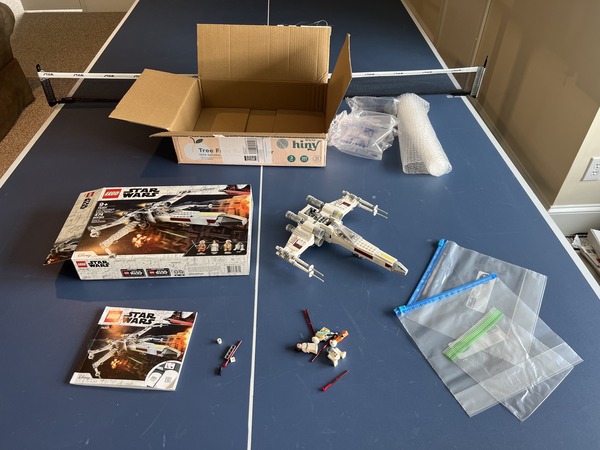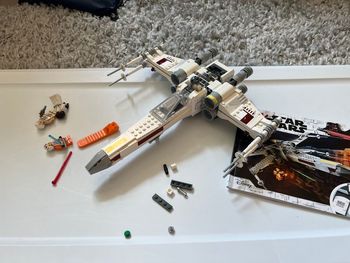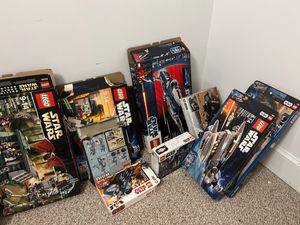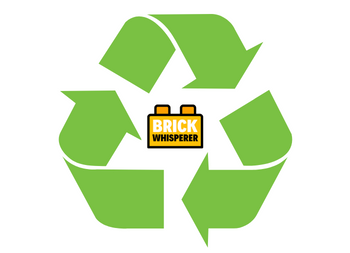Best Practices for Storing Lego Sets (Already Built)
Do you have some Lego sets that need to be stored away, but are already built? I’m going to go over a few ways for you to store your already built Lego sets for short and long term to keep them in the best condition possible. Let’s go over exactly how.
Short-term Storage with no Transportation (In your house)
I’m going to assume you are someone who needs to hide their lego sets in the closet or basement for a short period of time. To pull this off, you need to keep your Lego set safe from dust and any damage. Here’s how I’d do it.

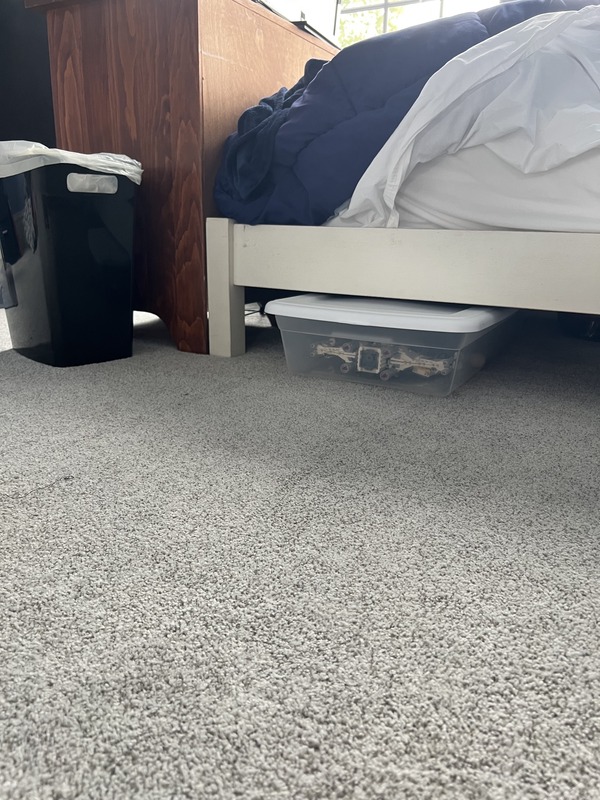
A simple solution to storing built sets for a little while is a plastic tub under your bed. I placed a few sets in gently and This one fit perfectly under mine. Here are a few tips:
Find an unused space in your house such as your closet, under your bed, or some shelves. You want somewhere your sets won’t be jostled around since we aren’t bubble wrapping or deconstructing these sets. Any big impact could break your sets and the Lego pieces.
Use a box or plastic storage container with a lid to keep dust off your Legos. Your main issue when storing Legos in your house will be dust. The best way to keep dust off sets is to quickly dust them before storing, and keeping them in a closed container.
Place delicate pieces and Minifigures in plastic bags to avoid damage. Even though your sets are just going in the closet or under your bed, every little movement could cause a piece to break off.
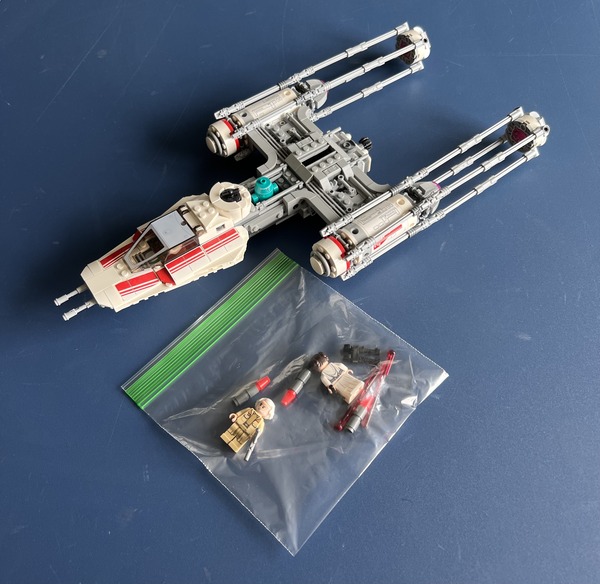
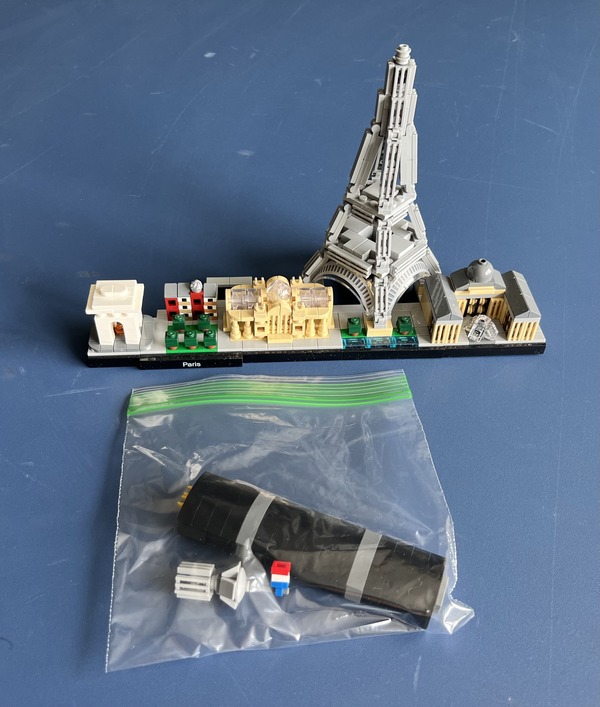
Minifigures can stay in cockpits, but otherwise it’s good practice to keep them together in a bag. They’ll end up scattered around the box, which can get confusing if you’re storing multiple sets like I am.
Short-term Storage (A bit more transport-friendly)
Let’s say you want to go a step further and store legos for a bit longer. Maybe they’re going up in the attic or down to the basement, and will be there for a good while. For this, I recommend a bit more padding around your legos and care when storing them. Here’s what I’d do:
Separate your Lego set at its joints and remove fragile parts. These would fall apart with movement or over time, so it’s better to separate them ahead of time. Then, bubble wrap each section, put it in a plastic bag, and then a box or container.
Watch me put this Lego X-Wing in storage!

I have an X-Wing set that I’ll use an example for this storage method. I’m going to bag it, bundle it, and put it in a box to keep it in the best condition possible. This method will be able to handle a bit of moving around, which is to be expected when putting something in storage.
For this method, you will need bubble wrap, plastic bags, a box or container, and newspaper or wrapping paper to be used as padding if your set still has its original box. Let’s get started.
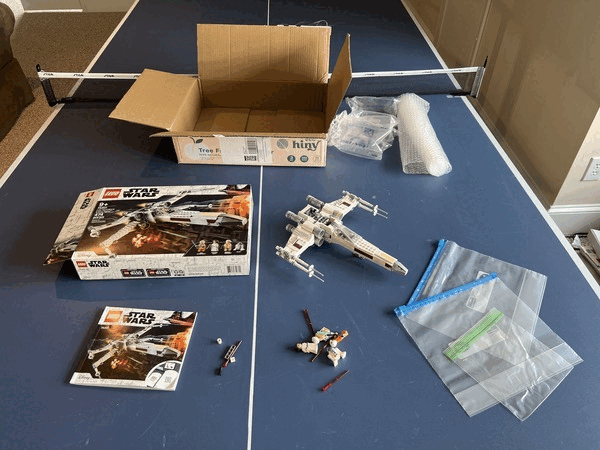
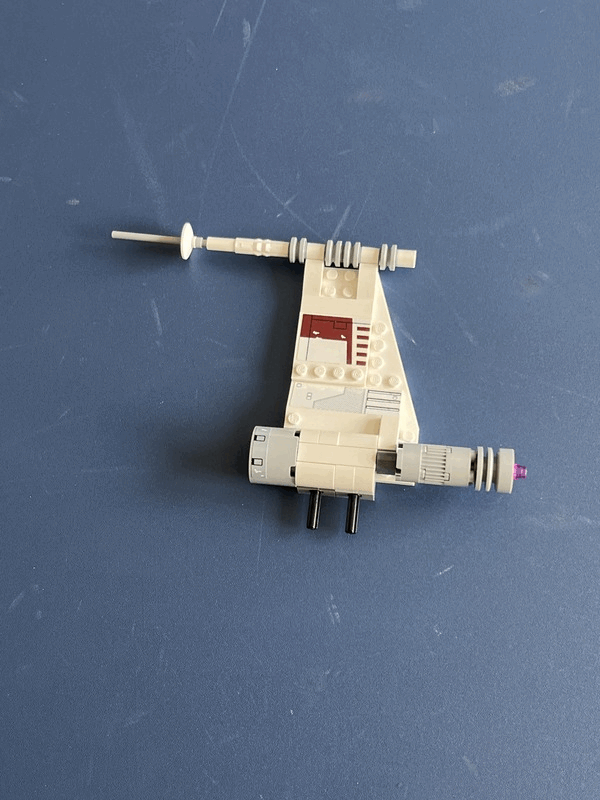
I started by removing the wings from the central cockpit. I picked these sections because they’re separated by joints, which I find to be the case for a lot of Lego sets. For your set, find a point in the set that’s fragile and may disconnect. That’s where you’ll separate it and bundled each section.
I bundled the cockpit in bubble wrap and taped it to keep it all together. I did the same for each wing, but removed the delicate parts and placed it all in a plastic bag before wrapping in bubble wrap. This avoids any pieces falling off and getting lost.
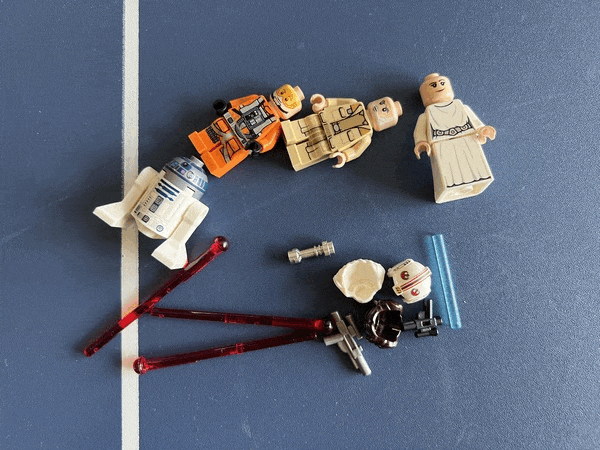
For the Minifigures, I put them aside and in a plastic bag with any accessories they came with. I removed anything from their hands, their headpieces, or any delicate attachments and included them in the bag.
With that, I was ready to put it all in storage! If you didn’t keep your box, you can put these wrapped sections of a Lego set in a box or container and put it into storage. If you aren’t keeping your box, your Lego collection is plummeting in value! Start making that a habit. Click here to read my study where I go over how keeping a Lego’s box can increase its value by 10% or more!
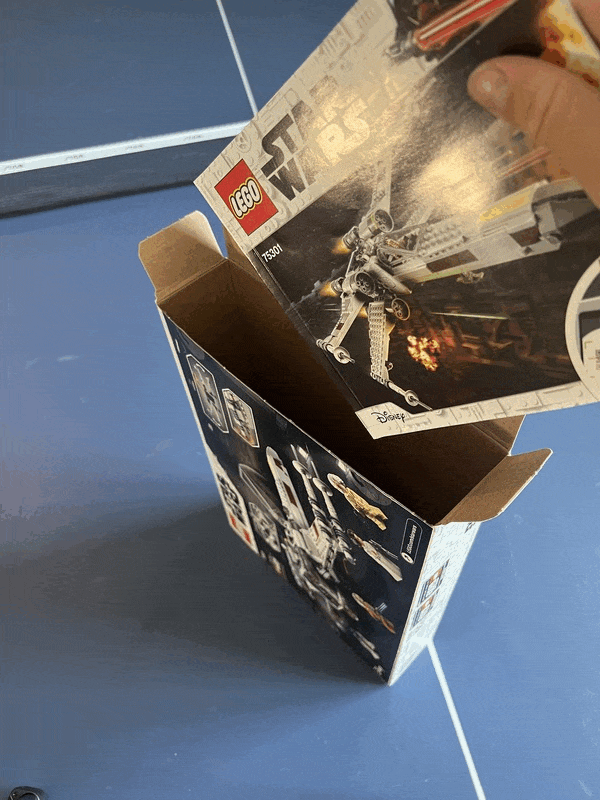
With each part of the set bubble wrapped or in bags, it’s ready to go in a box. I put every component of the set in its original box, but you can just throw the components in a container if you don’t have a box.
Put padding around your set’s original box if you have one. The box is just as important as the pieces if you care about resale value.
Remember to keep the instructions. You will need to rebuild parts of your set when you take it out of storage. For your future self’s sake, remember to keep the instructions with the set. If you don’t have them, find and write the set ID on the box. You can find the set’s instructions with this number at Lego.com.
I also did an interesting study where I found that sets sold with their original instructions sell for more than without it. If you want to read it for yourself, click here.
Long Term Storage (Transport-ready and safe!)
Step 1: Deconstruct your sets methodically.
As you start to break apart your set, I want you to do it wisely. Find your instructions and work backwards. I want you to take apart the set in reverse order. This will ensure you don’t break the pieces as you break it apart.
Take it slow! Begin disassembling the set, following the instructions in reverse order. Carefully remove one piece at a time to prevent damage or loss of small components.
Step 2: Bag Pieces as you go and section them.
Think about future you as you take apart your set. The more complicated you make it for yourself, the longer it will take to rebuild the set. The Lego group separates parts of its sets into different sections, and I recommend you do the same for when you deconstruct yours. Put the pieces in plastic bags and use permanent marker to label them.
- Plastic Bags: Place each group of pieces into separate, resealable plastic bags. Make sure to label the bags accordingly for quick identification.
Step 3: Box and Store
Proper storage is key to preserving your LEGO collection:
- Choose Storage Containers: Select suitable storage containers based on the size and quantity of LEGO pieces you have. Clear plastic bins or drawer systems work well, allowing you to see the contents without opening each box.
- Keep Sets Together: If you have multiple LEGO sets, consider storing each set’s pieces in separate containers or bags. This will help maintain the integrity of the original sets and make rebuilding easier.
Step 4: Instructions or Set Number is a Must
Preserve the building instructions and keep track of set numbers:
- Save the Instructions: Store the original building instructions in a safe place, such as a binder or folder. This ensures you have them readily available when you want to rebuild a set.
- Set Number Labeling: Write down the set number or name on the storage container or bag holding the corresponding pieces. This will help you quickly locate the desired set in the future.

